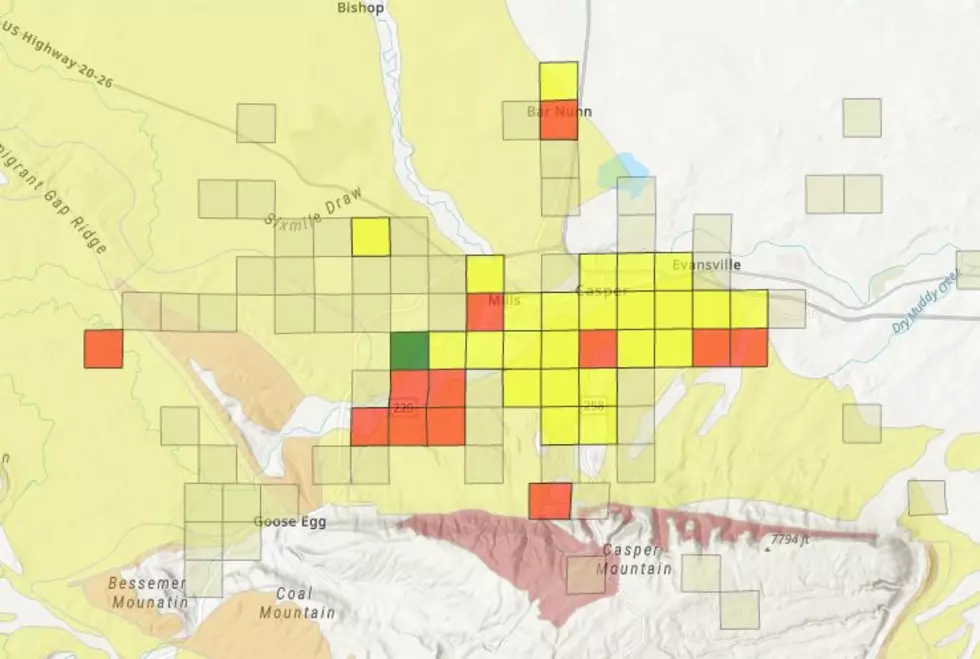
Wyoming State Geological Survey Shows Potential Radon Hazards Throughout the State
The Wyoming State Geological Survey (WSGS) recently added new layers to its interactive Wyoming Geologic Hazards Map that make it easier to visualize radon potential throughout the state. Radon is a colorless, odorless, and tasteless radioactive gas that can build up to hazardous concentrations in enclosed spaces.
Exposure to radon over time can cause lung cancer, and it is the second leading cause of the disease in the United States.
Radon gas comes from the natural decay of uranium, and it can emit from rock, soil, and groundwater.
Test results have shown elevated radon levels in all 23 of Wyoming’s counties, though radon concentration can vary widely from building to building due to local and non-geologic factors.
“Radon is one of Wyoming’s most widespread, yet often underappreciated, geologic hazards,” says WSGS hazards geologist James Mauch. “These new layers are meaningful additions to the online map, and we hope they raise awareness about the need for Wyoming residents to have their homes tested for radon.”
The U.S. Environmental Protection Agency recommends mitigation of buildings if an indoor radon concentration tests at or above 4.0 picocuries per liter (pCi/L) and to consider mitigation for concentrations between 2.0 and 4.0 pCi/L.
The Wyoming Department of Health offers free and discounted at-home radon test kits for Wyoming residents.
See the full map here.
What to do if your home has high levels:
A radon level of 4 pCi/L is considered high.
There are things that one can do to reduce radon, like sealing or caulking foundation cracks and openings to help reduce the amount of radon that can enter a home. Installing a vent pipe and fan system to pull radon from the house can keep it from accumulating inside. And plastic sheeting be installed sometimes to go over a gas-permeable layer that would stop radon from entering a home.
Even if your home's radon levels aren't above 4 pCi/L, but come close, it still might be a good idea to consider remedies.
Symptoms of radon exposure
Radon can damage lung cells, which leads to cancer. Radon causes about 21,000 lung cancer deaths every year in the U.S.
Symptoms include a persistent cough, coughing up blood, wheezing, shortness of breath, hoarseness, ches pain, and frequent bronchitis and pneumonia.
Rolling Hills Fire Destroys Home
Saturday Night Fights in Casper: 'Spring Wars'
Gallery Credit: Kolby Fedore, TSM
